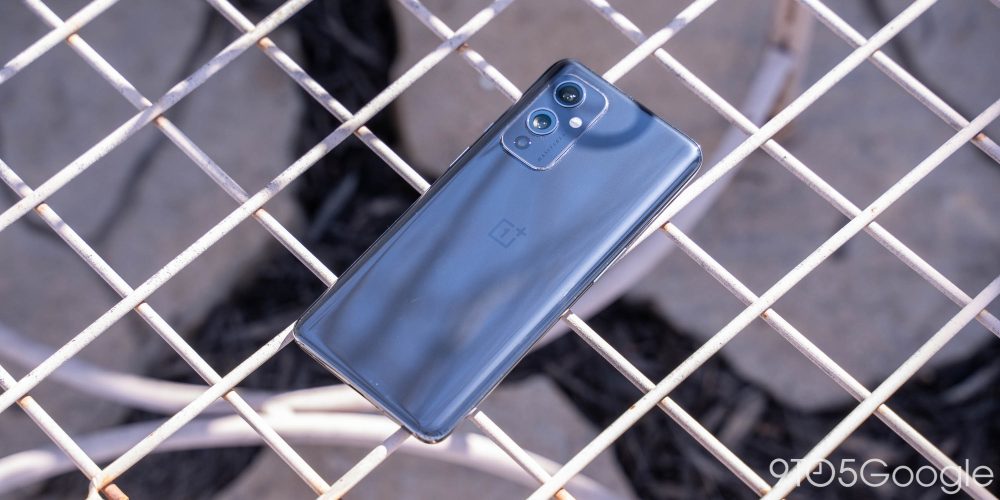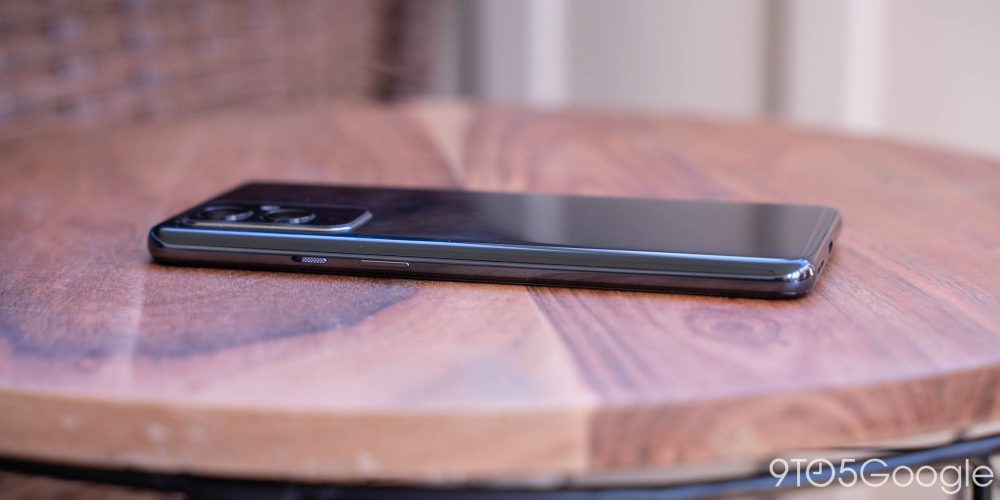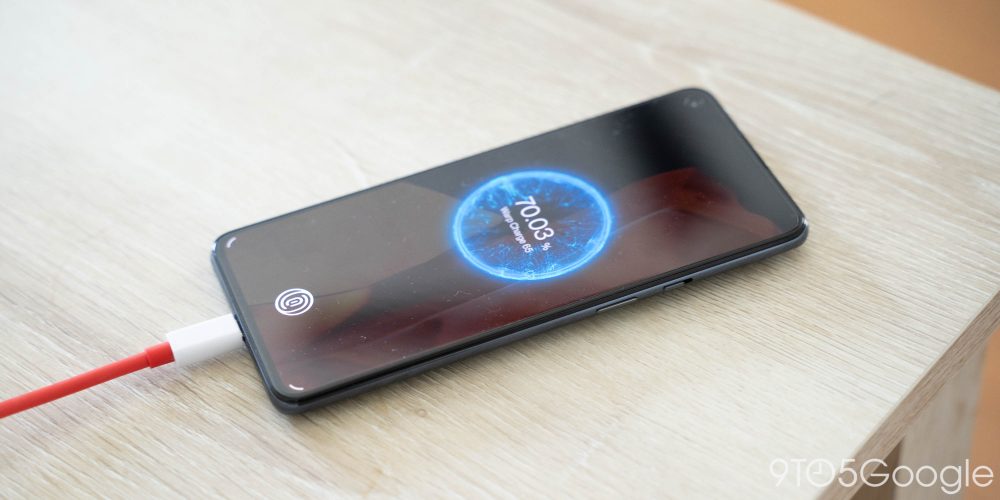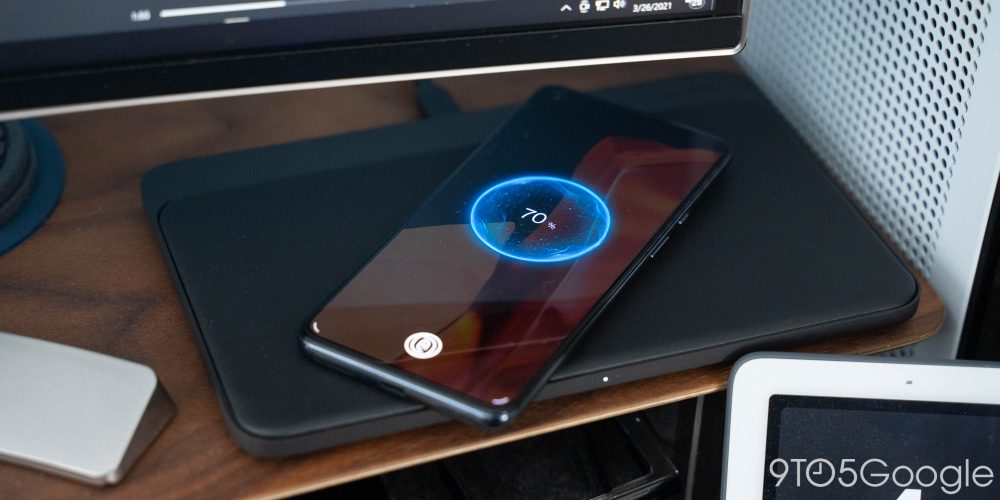
OnePlus has spent the better part of a decade building its reputation on two thing: the best specs and the lowest prices. Over time, the latter has been eroded away a bit, and OnePlus also introduced its “Pro” lineup that, well, creates a device that directly goes against the “Never Settle” motto. In 2021, though, the regular OnePlus 9 still stands in the Pro’s shadow, but it’s a better alternative than ever before.
HARDWARE & DISPLAY
I don’t think there’s much to say about the OnePlus 9’s hardware, personally. It feels like what I’ve come to expect from a OnePlus phone. The build quality is solid with a smooth metal rail and glass back, though both materials feel a bit cheaper than they should. The rail doesn’t have that classic “cool to the touch” feel of aluminum, but that’s because it’s not metal. Rather, it’s plastic. It’s a cost-cutting measure and one that’s unfortunate, given the price increase, but it’s not a huge deal. The back is still glass, though. There was some confusion that the back panel was actually plastic, but I confirmed with OnePlus it is indeed Gorilla Glass 5, it just feels weirdly “hollow” like plastic would.
What I don’t like about the hardware is that choice to go mostly glossy. Outside of the “Arctic Sky” option that isn’t even sold in the States, all colorways are extremely glossy. The “Astral Black” model I tested feels absurdly slick, which had me immediately slapping on a case for the entirety of my review period. Looking at the purple “Winter Mist,” it’s a much more compelling colorway, but with the same problem – it’s slippery. Worse yet, the near mirror finish makes it a fingerprint magnet. Really, my main question is, Why? OnePlus has been a leader when it comes to matte finishes, using them widely for four generations of its smartphones. Now, we’re back to glossy, and it’s just sad. In the reveal event, OnePlus mentioned that this was to appeal to everyone, but that argument doesn’t work when none of the matte models are sold in an entire region.
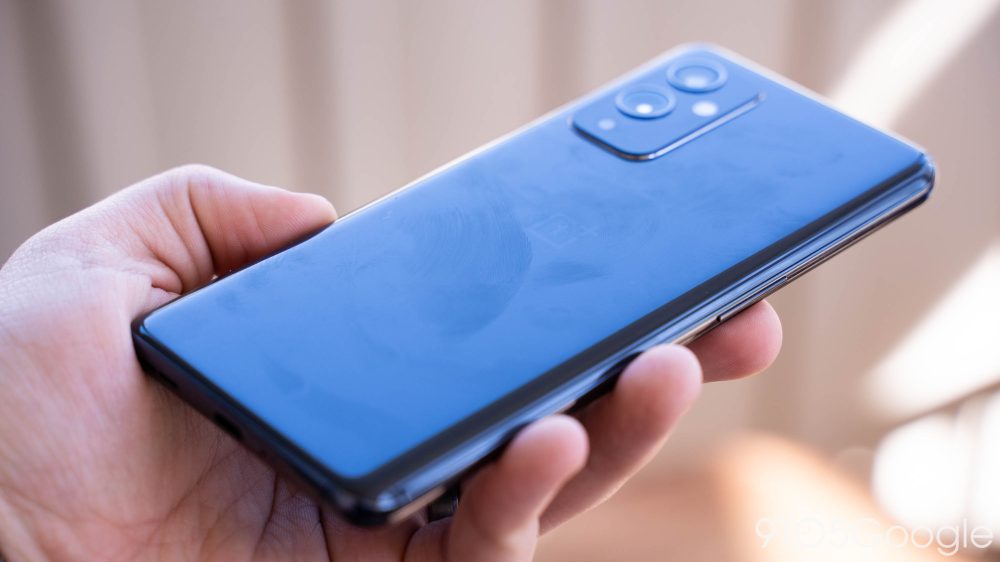
That rant aside, though, it’s hard to complain, really. The hardware is well done, as is the usual for OnePlus. I even found myself using the alert slider more often this year, something I usually forget about when I pick up one of the company’s smartphones. The size, too, is manageable. Where the Pro can sometimes feel a little large, this model feels great to hold and use.
The story is pretty much identical when it comes to the display, and OnePlus said as much in its own launch event. To quote them:
Really, there are no bells and whistles, just a genuinely great display.
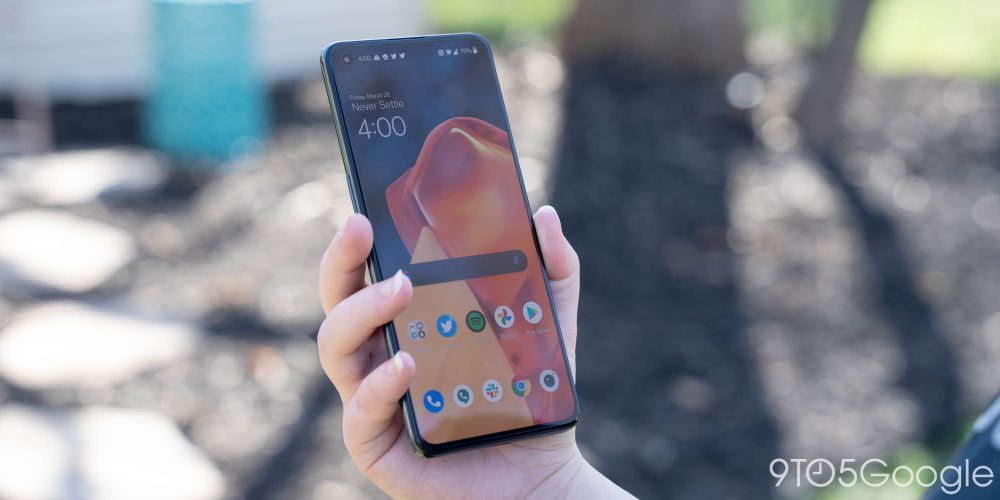
The 6.55-inch, 1080p panel isn’t especially sharp, but it’s pleasant to look at. The 120Hz is, as always, appreciated, and I never felt like I was missing out on the adaptive refresh rate of the Pro. Even using the two side by side, there was no noticeable difference. It might have a slight impact on battery, but a minor one. Brightness is suitable for outdoor viewing; you might run into issues with direct sunlight, but for the most part, it’s good enough.
The biggest advantage, though, is that the display is flat. No curved glass here, just a good, flat display that’s much nicer to use. Curved displays are dumb.
One final note, the included screen protector on OnePlus 9 is especially bad, as the constant smudges in the photos below show pretty clearly. I, for one, really appreciate included screen protectors, but the quality here is just awful.
SOFTWARE & PERFORMANCE
OxygenOS 11 builds on top of Android 11 with some added customization features and a few added apps. The story hasn’t changed much since the OnePlus 8T last year, but that’s not really a bad thing. OxygenOS 11 is a clean, fast interface, and OnePlus has finally given some attention to fixing its background app-killing woes. I never ran across issues with that during my week-and-change using the OnePlus 9 as my daily driver; even using the model with 8GB of RAM. OnePlus’ software has changed to where it looks a little less like stock Android and more like Samsung’s OneUI, but it bridges that gap fairly well.
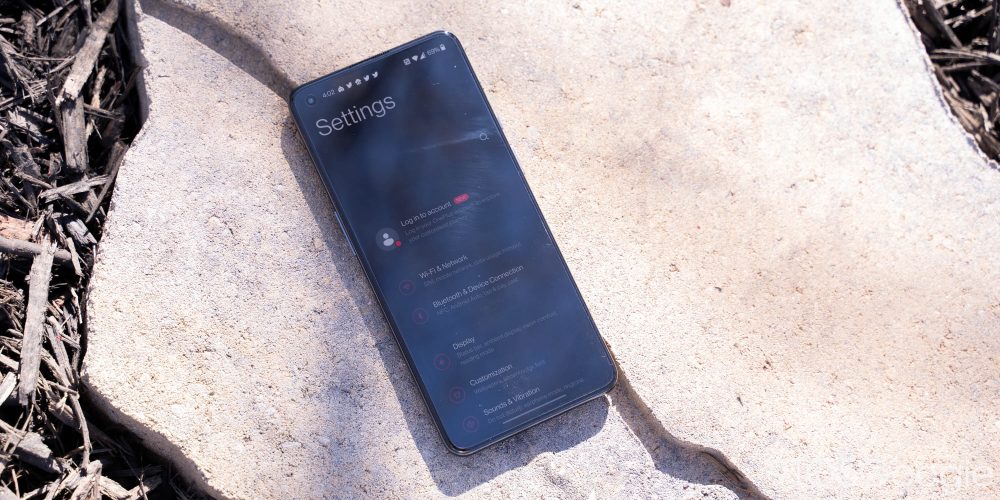
That’s all fine and dandy, but it comes with a caveat. OnePlus was once lauded for its excellent software support, but as the company has evolved, that reputation has eroded away. The OnePlus 8 series picked up Android 11 within a matter of weeks, but the OnePlus 7 series had to wait six months to get the same update. OnePlus is very consistent about security patches, but that’s in that the updates are always late and months are often skipped. This is a side effect of how OnePlus handles its rollout, but the supposed benefit of that making every update a bit more stable just doesn’t pan out.
It’s an unfortunate situation, where OnePlus is falling well behind. Pixels get three years of major updates, Samsung phones get the same, plus an extra year of security updates. There’s really no excuse for OnePlus to be behind the curve here when prices get higher year after year.
Bugs have become increasingly common as well with updates, but I’ve run across a couple of issues even on the out-of-the-box update. The biggest issue was with phone calls, with calls occasionally just not ringing on my phone. I first attributed it to Google Voice, but it seems I’m not alone.
The performance paired with OxygenOS 11 is excellent as well. As mentioned, I didn’t have any issues with apps being closed in the background, but notifications still occasionally came in delayed. That’s more of a software issue, though.
Raw performance, frankly, rocks. The Snapdragon 888 is a speedy chip and paired with 8GB of RAM and a 120Hz display it flies. Scrolling hiccups are rare, and anything I did that used the raw horsepower managed well. I didn’t have a chance to play any games beyond one very brief Stadia beat, but rest assured that this chip is more than powerful enough to play even the most demanding mobile games.
BATTERY LIFE & CHARGING
Battery life was fairly good; solid, but not exceptional. On any given day I’d use the phone for around two to four hours of screen time, and by bed, it would have around 40% remaining. On a couple of heavier days, I managed to drain it down to about 20%, but I never killed the battery in a single day’s use. These results won’t turn heads, but very few people will have a reason to complain.
Charging helps, too. The included Warp Charge 65T brick charged up the phone with insane speeds. In just 20 minutes, I could get more than enough power to use the phone the rest of the day. This came in handy, too, as there were a couple of nights I failed to charge the phone and woke up to battery warnings.
Another perk here is wireless charging, a feature OnePlus is no longer frustratingly locking to its top-tier smartphone. The OnePlus 9, just like the Pro, features Qi wireless charging. What you won’t find here is the faster 30W or 50W Warp Charge speeds. When using Qi, the OnePlus 9 is limited to 15W speeds. That’s still plenty fast, though, and I was just happy to have the feature at all!
CAMERA
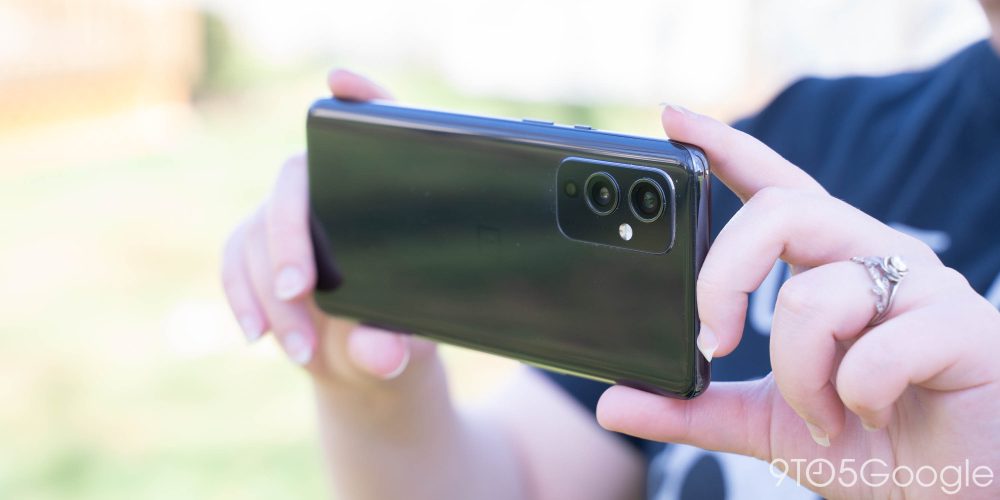
Photography has long been a sore point of basically every OnePlus smartphone, but it’s also been the core focus of the OnePlus 9 series. While the Pro may be the place where these improvements are felt most, the regular 9 sees some big enhancements, too.
The primary camera on the OnePlus 9 is a 48MP shooter, just using a slightly different sensor compared to the 9 Pro. The main difference between the two cameras on the primary lens is depth-of-field. There’s more noticeable bokeh on the Pro that’s lacking on the 9, but in a lot of cases that actually proves to be more of a strength. Colors are great on the 9 as well, with the phone striking a nice balance between bright and vivid images without throwing away accuracy. Some of the credit for that goes to Hasselblad, which tuned the colors as part of a partnership with OnePlus.





The other two lenses are a 50MP ultrawide and a 2MP monochrome. That smaller 2MP sensor, to be frank, is pointless. There’s absolutely no benefit to using it over a regular black and white filter, and I would much rather have seen even a mediocre telephoto lens in its place. The ultrawide camera, though, is good. OnePlus does a great job of minimizing distortion and preserving detail, but the color difference between the main lens and the ultrawide lens is stark in my testing.
We detailed the cameras on the OnePlus 9 more in-depth in our “Shot for Shot” series, but the consensus for the smaller phone is that it’s honestly just as capable as the Pro. Pictures generally look just as good, with the only real flaw being the lack of any telephoto lens. It’s really a pleasant shooting experience and one that holds up well against the likes of Samsung and Google.



THE LITTLE THINGS
What can I really say here? OnePlus has an optical fingerprint sensor under its OLED display and, as has been the case for years now, it’s among the best in the business. The only complaint is that, for whatever reason, the sensor is just barely above the bottom of the display, making it just a bit uncomfortable to reach at times. Speed and accuracy, though, were absolutely solid.
I can’t remember the last time I was impressed by the speakers on a OnePlus smartphone, and that story is the same on OnePlus 9. The downward-firing bottom speaker backed up by the earpiece is adequate but nothing to get excited about.
One important note about the OnePlus 9, and Pro for that matter, is that the network situation in the US is… complicated.
First, dual-SIM support is gone. This feature was long available on OnePlus phones in the US, making them some of the only phones easily available in the States with proper dual-SIM support. Shame!
Second, 5G is spotty. 5G on its own is not very important right now, but with this phone you’ll be limited to 4G on AT&T, not even with a promise of it coming in the future. T-Mobile will support the feature on unlocked and carrier-sold models, though, and Verizon certified both devices as we were wrapping up this review.
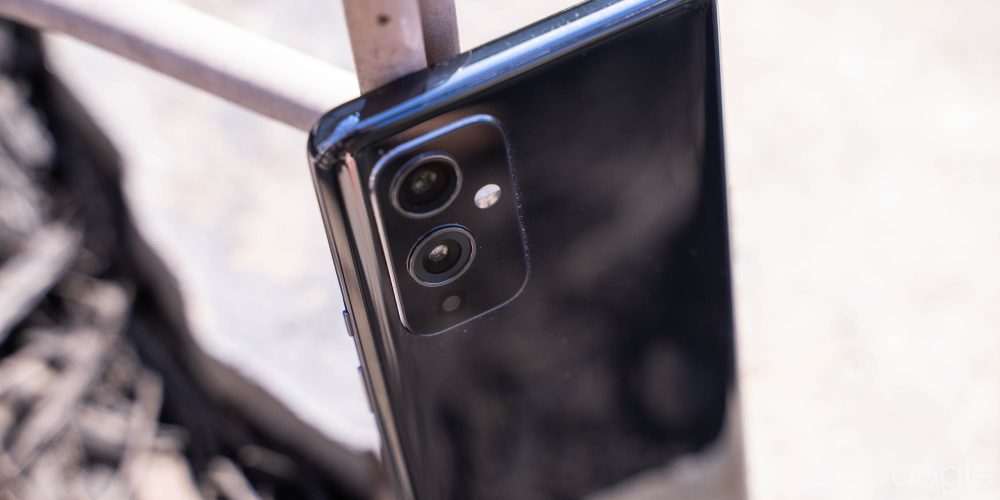
FINAL THOUGHTS
What makes the OnePlus 9 such a good alternative to the Pro? There are three key reasons. First, there are fewer differences in features such as fast charging and wireless charging. Second, there’s not much of a gap in camera quality. Perhaps most importantly, there’s a much bigger difference in price compared to past years. The standard 9 is available for $729, where the Pro demands $969, a $240 price difference.
Personally, I would absolutely buy the 9 over the Pro this year. A slightly better screen, slightly better charging, and the addition of a mostly mediocre telephoto camera are absolutely not worth the extra money.
I think the OnePlus 9 is a solid buy overall. The hardware here is sturdy and there’s a good amount of value. My biggest hesitation is on future support, as OnePlus has eroded trust on speedy updates, especially in the second and still final year of support. If that doesn’t concern you, though, the phone is sold through , B&H Photo, Amazon, , and other retailers starting on April 2. T-Mobile will also be carrying the device.
Author: Ben Schoon
Source: 9TO5Google



